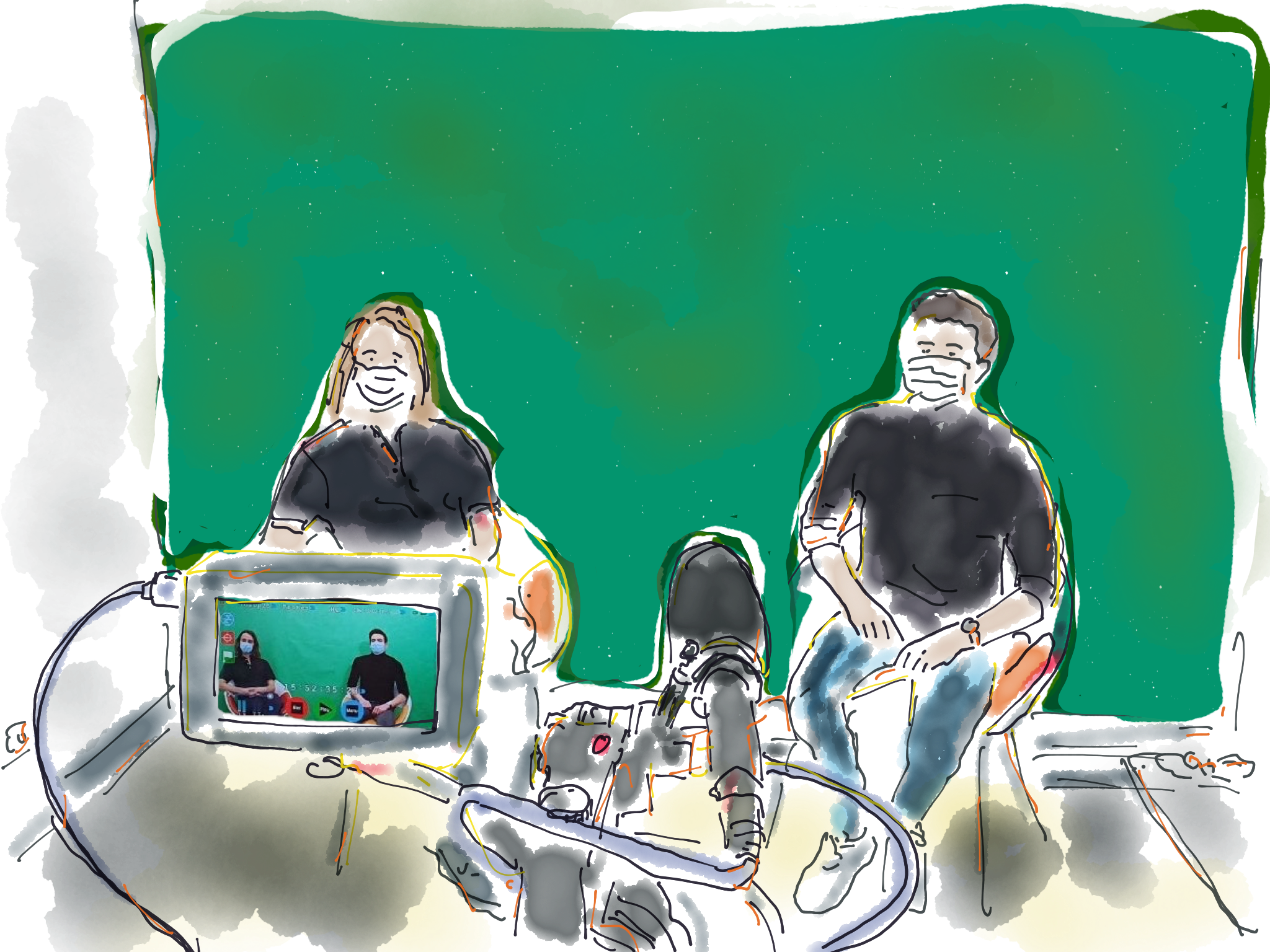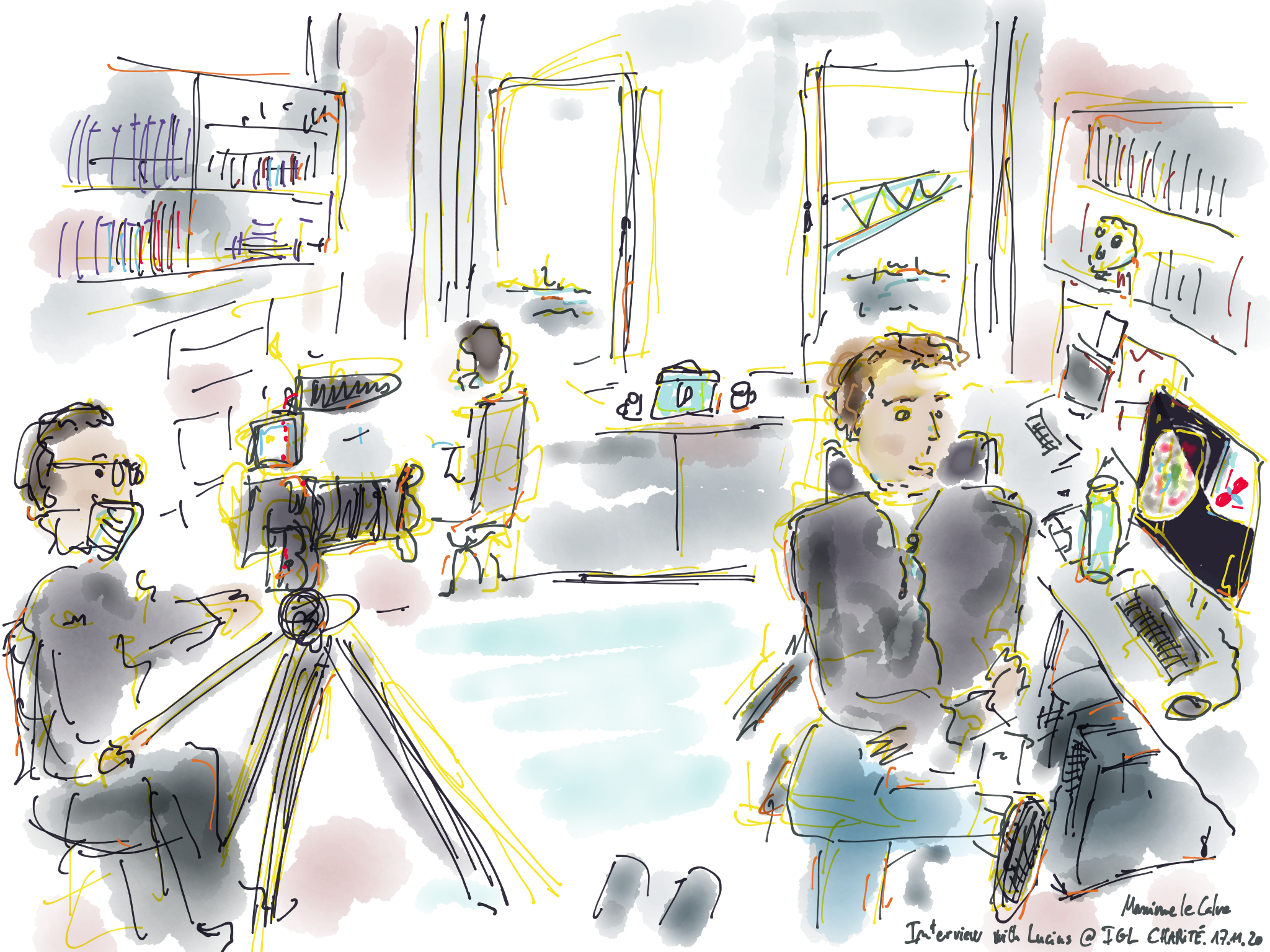This week we started the shooting of a movie that will present the activities of the Image Guidance Lab at the Humboldt Forum in Berlin. Thomas Picht asked for my contribution as an ethnographer to the project. Recognizing an apt opportunity for intervention and invention with these research partners, I negotiated (not long, fortunately!) to combine this short project with a longer ethnographic video project. George Marcus labeled this kind of opportunity as a “para-site” (2000): a space aside from the everyday life of the community that I am observing, in which we are given the chance to think and perform together, and by doing this, to build a shared understanding the reality of the collective research at the lab and present it to the world.
Doctoral researchers Melina Engelhardt and Mehmet Tuncer engaged with me to develop this project, together with Yoonha Kim. First, in the row, Mehmet shared his perspective on his current research and on the future of neurosurgical planning. We sat in front of the green screen that is now used for the current COVID online teaching efforts, under the supervision of our cameraman Theo. Melina took a photograph to share both on her Twitter account and the labs. That picture helped me to compose this scene from another perspective.
Thanks to the cluster Matters of Activity, we could hire an experienced and talented filmmaker, Theo Thiesmeier, who has a long-standing practice of producing movies in curatorial contexts. We sought and found, thanks to Thomas, a beautiful space to host a series of group interviews: the historical library of the not-less-historical Rudolf Ludwig Carl Virchow anatomical auditorium. On the walls of the library, a collection of skulls and mortuary masks of celebrities of that time. Two skeletons were hanging out there with us. But they don’t get to feature in our movie… “a bit too weird”, says Theo. Maren Denker accepted generously to give us a short interview there about her nascent project at the Lab on the improvement of surgical treatment of facial paralysis.
The “main” of this first film project around the Digital Twin project is an interview with its group leader, Lucius Fekonja. I have already written a first article on his brain cartographic practice, focusing on his intersecting expertise as a medical illustrator and neuroscientist (soon accessible online there). However, the camera and this specific project gave us the unforeseen possibility of sitting and conversing together for more than 90 minutes. We discussed the installation in the Humboldt Lab, his current project around the improvement of planning surgical intervention on speech functions. He was also kind enough to unfold his medical illustration working process for us, working through the layers on his giant drawing tablet… more on this very soon! “What I like about Maxime’s project is that it is somewhere midway between an art and science format”, he said to Theo. Of course, he appreciates the interest that I manifest for his work. Like him, I see this collaboration as the exchange of time and ultimately as the “exchange of gifts”, as the ethnographer and film maker John L. Jackson puts it (2004). An exchange of gifts that is intertwining our careers and our destinies.
This fusion between the pictures of Lucius and the works of Mehmet hasn’t happened yet in the video, but it is soon to come. This is also what multimodal anthropology is leading to —an inventive practice which is first and foremost a collaborative thing going on between the research partners and the anthropologist. This process gives shape to surprising results and engaging results between ethnography and fiction, between the mediation of a present reality, a reflection on the shape of a practice, and a shared speculation on the future.



